BHNS

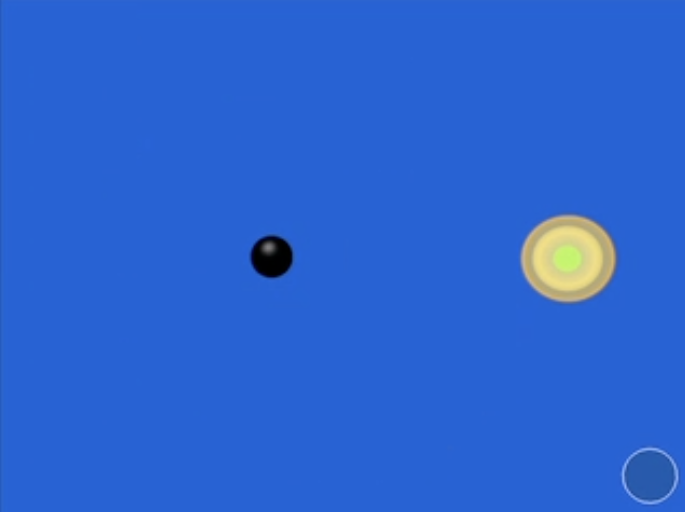 Fig. 1-1 Initial Configuration of Binary |
Evolution is performed on an AMR (Adaptive Mesh Refinement) grid. The outermost grid is 394 M x 394 M, the innermost refinement level for the BH is 2.8 M x 2.8 M and the innermost refinement level for the NS is 3.3 M x 3.3 M. Here M is the total (ADM) mass of the intial system. The innermost resolution is ΔXmin/M = 1/32.5 while the outermost is ΔXmax/M = 3.94. In this simulation, the initial binary coordinate separation is D0/M = 8.81, the initial angular momentum of the system is J/M2 = 0.702, the mass ratio is MBH:MNS = 3:1, and the black hole spin parameter is JBH/MBH2 = 0.00. (Note: The open circle in the lower right-hand corner of the above figure is a clock.)
The neutron star obeys a polytropic equation of state, P = Kρ0 Γ, at t = 0. It is evolved according to the adiabatic evolution law, P = (Γ-1)ρ0&epsilon, where P is the pressure, K the polytropic constant, &epsilon is the internal specific energy, Γ is the adiabatic index, and ρ0 the rest-mass density. We chose Γ = 2 to mimick stiff nuclear matter. The star is irrotational (nonspinning) and in a quasiequilibrium circular orbit.
The initial compaction of the neutron star is MNS/RNS = 0.145. The rest mass is 83% of the maximum rest mass of an isolated, nonrotating NS with the same polytropic EOS.
The initial binary is in a quasiequilibrium circular orbit. The matter and gravitational field variables are determined by using the conformal thin-sandwich formalism. BH equilibrium boundary conditions are imposed on the BH horizon.
In the clip, the rest-mass density of the neutron star is plotted on a logarithmic scale normalized to the initial central density. The gravitational field is evolved via the BSSN scheme using "moving puncture" gauge conditions. The relativistic hydrodynamic equations are solved using a high-resolution shock-capturing (HRSC) method.
After two orbits the density contours are for the most part undisturbed. After 3.5 orbits the first few density contours have crossed into the apparent horizon. The NS tail deforms into a quasistationary disk, as the bulk of the matter is all accreted onto the hole in a few periods.
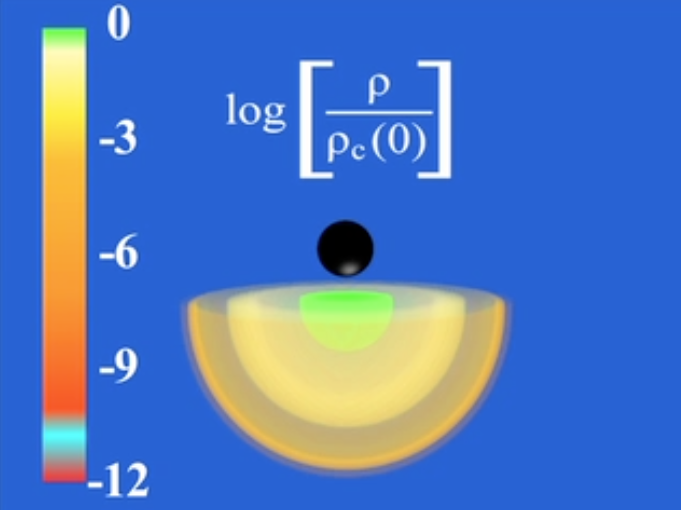 Fig. 2-1 Color code for density profile |
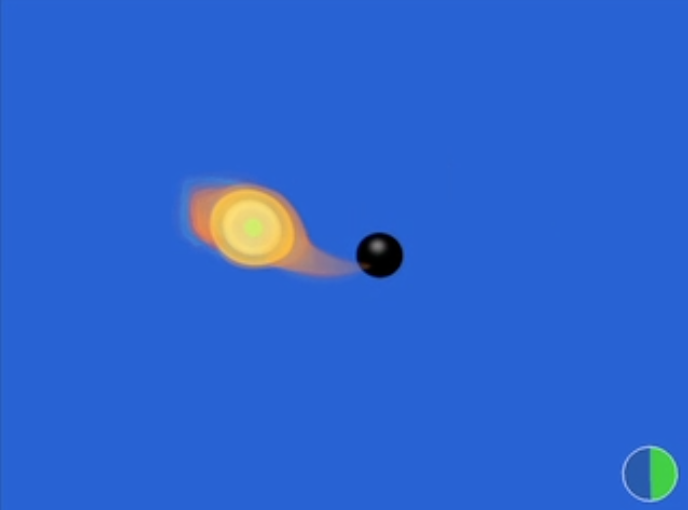 Fig. 2-2 Density Profile at t/M = 450 |
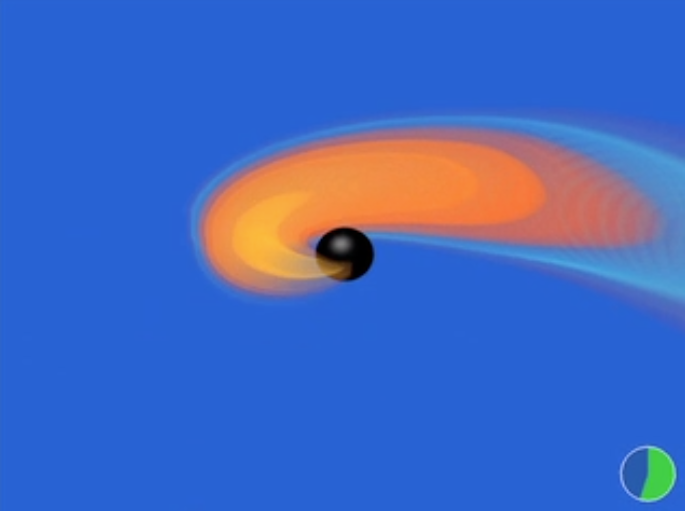 Fig. 2-3 Density Profile at t/M = 500 |
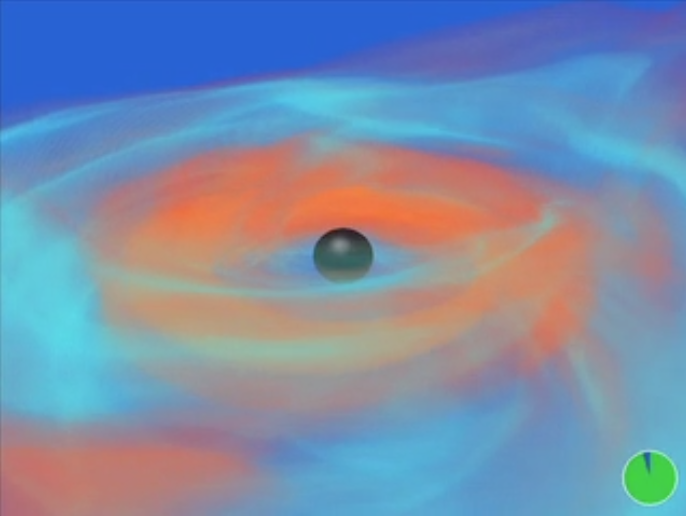 Fig. 2-4 Density Profile at t/M = 900 |
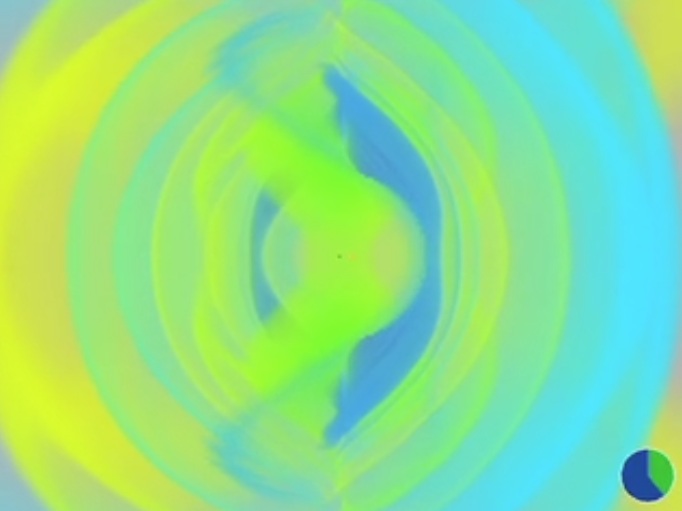 Fig. 3-1 h+ in both hemispheres |
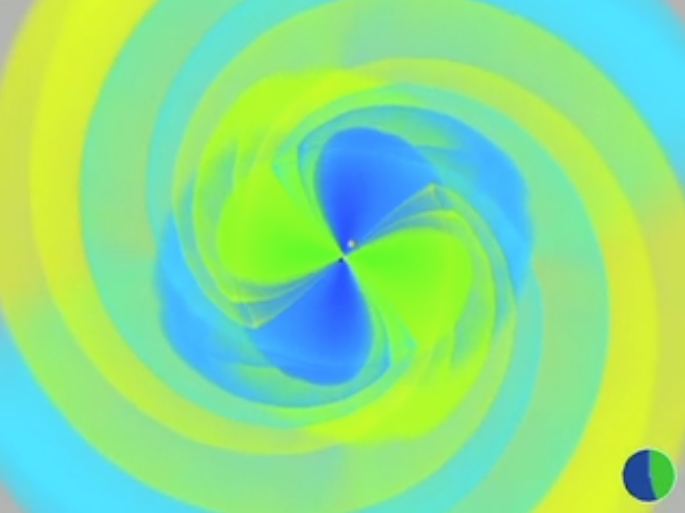 Fig. 3-2 h+ in one hemisphere |
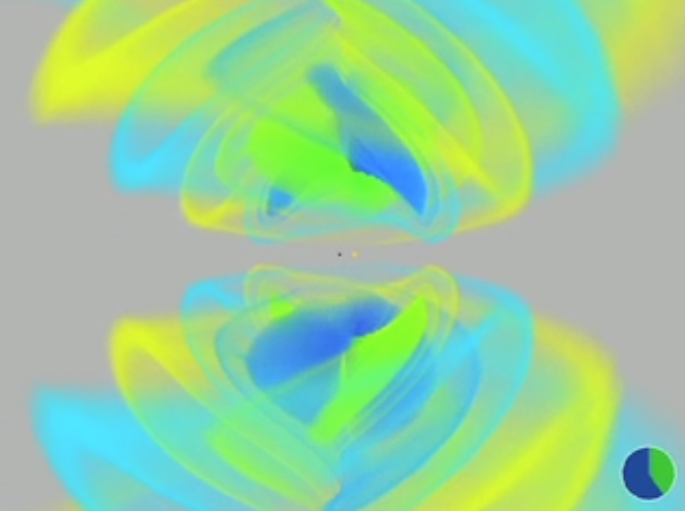 Fig. 3-1 h× both hemispheres |
| JBH/MBH2 | 0.559 |
| ΔJGW/J | 17.4% |
| ΔEGW/M | 0.93% |
| Recoil velocity | 33 km/s |